Integrated cancer treatment centre of the CHU de Québec-Université Laval
The integrated cancer treatment centre (Centre intégré de cancérologie - CIC) is a big milestone in the delivery of the new hospital complex (NCH) of the CHU de Québec-Université Laval on the site of the Hôpital de l'Enfant-Jésus in Québec City. Starting with the design of large green inner courtyard around which gravitates the cancerology program, the CIC architecture —spanning 32,230 m²— was developed to offer reception, waiting, care and work spaces that are pleasant and conducive to well-being and healing. Abundant natural light, outdoor views, green spaces, colors, warm materials and works of art characterize this new soothing healthcare space that integrates best practices and the most recent technologies.
With the delivery of seven major projects in the last decade, the design and execution of integrated cancer treatment centers has become one of the biggest expertise of the firm, recognized as the best in Québec.
View the press kit on the project >
View the plans >
Location
Partners
Groupe A, DMG, Lemay, NFOE et GLCRM
Scale
32 230 m² / 190 M$
Completion
2015 — 2022
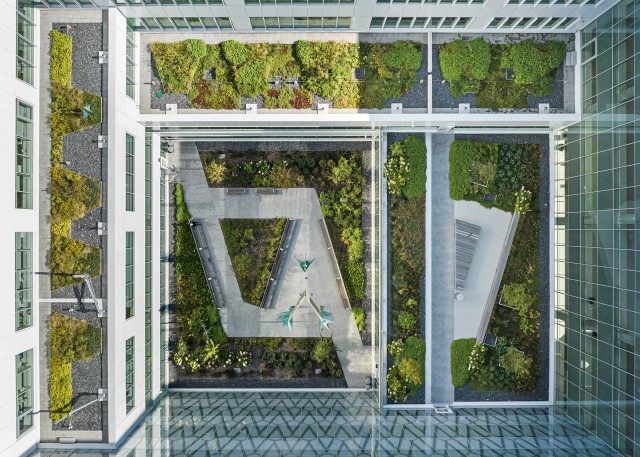
A comforting environment that promotes wellness and healing
The CIC embodies changes in the way cancer patients are treated. Using a holistic, interdisciplinary, human-centred approach, it was designed both for technologically advanced equipment and cutting-edge treatments and to provide psychological support to patients at every step of their care. The team of professionals strove to develop a “healing environment” by designing facilities that are ultra-modern, spacious, well-lit, green and highly functional. The well-being of both patients and care staff was at the heart of each decision: the implementation of best practices combining facilities that facilitate way-finding through the use of colours; the placement of landmarks and views of the outside; the maximization of natural light; access to therapeutic gardens; the careful selection of finishing materials and furniture to create comfortable spaces that feel more like a place for care and wellness rather than a sterile hospital environment; and the ingenious integration of specialized equipment for an elegant and streamlined result free of visual distractions.

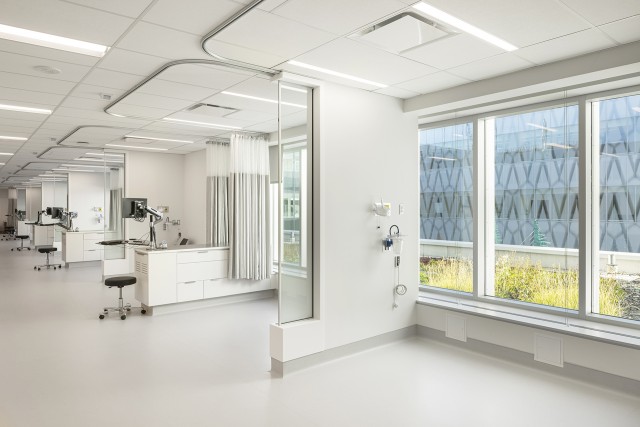
Rooftop Gardens
While the CIC’s volumes were determined during the early phases of planning for the entire new hospital complex, the design of the centre was also refined from the inside out during the subsequent steps. Thus, the courtyard was reworked in tiers with the creation of the rooftop gardens.
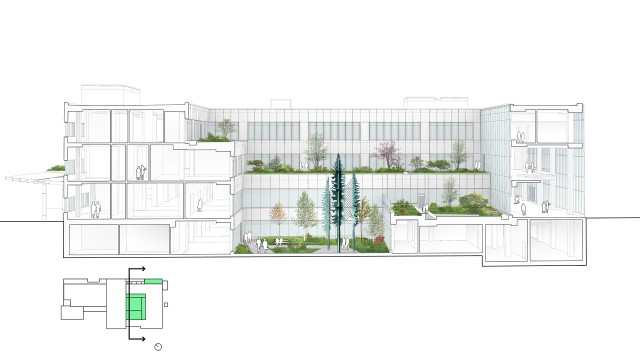
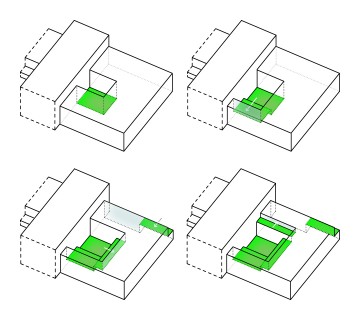
“The centre was designed to make the gardens visible from all levels. A system of rooftop patios and gardens was developed and refined in the inner courtyard to give it a human scale, so that each treatment space benefits from a garden. We have been working toward perfecting the concept of the healing garden for 20 years, adapting it to the context and scale of each project.”
Architect and Director at Jodoin Lamarre Pratte architectes and Lead Designer for the CIC
Expert in architectural design for healthcare and integrated cancer treatment centres

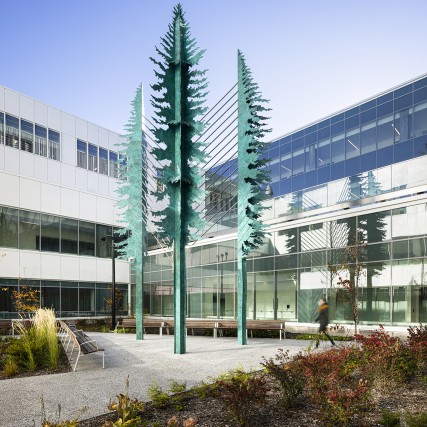
As well as contributing to the creation of a healing environment by providing soothing views to patients at different stages of care – in particular to chemotherapy patients, whose treatments take several hours – the courtyard gardens and green rooftops provide several environmental benefits.
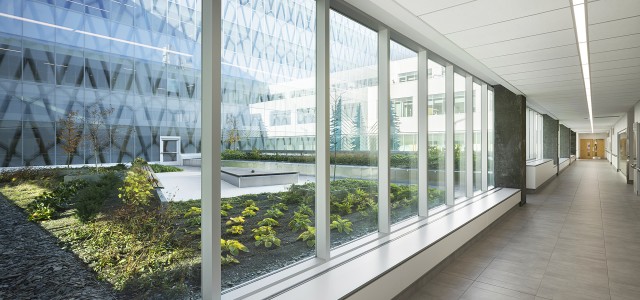
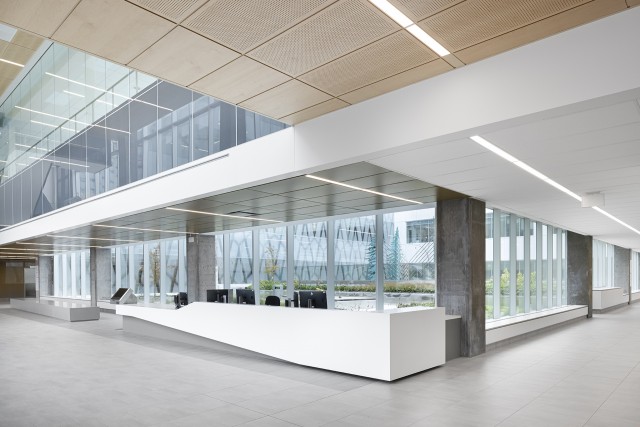
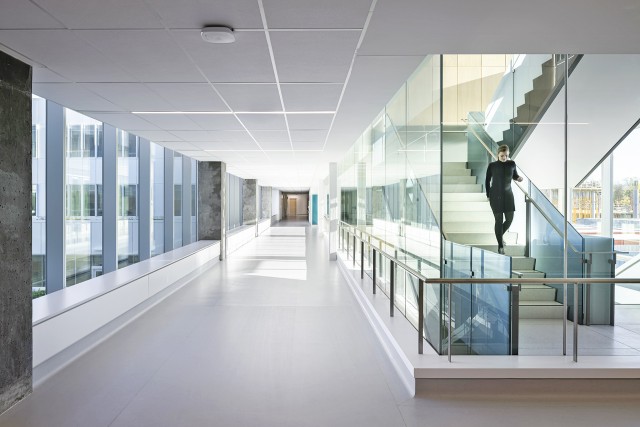

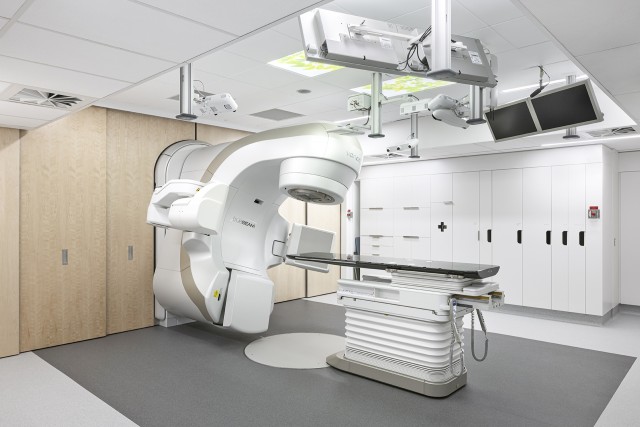

Eventually, the NCH will gather on a single site the clinical, research, education and evaluation activities of the Hôtel-Dieu de Québec and of the Hôpital de l'Enfant-Jésus. Spanning more than 260,000 m², the project includes the construction of new buildings on the Hôpital de l'Enfant-Jésus site for a total surface area of 180 693 m² and the refurbishment of 27 492 m² in existing spaces.
This ambitious project —whose construction is planned over more than 10 years—, includes different components : the clinico-logistical platform (2020), the Integrated Cancer Center (CIC), a new power plant and generators building (2021), the cyclotron, the research centre and the lodging services (2022), the critical care pavilion (2024), and the refurbishment of the Hôpital de l'Enfant-Jésus (2029).
Within the consortium formed by Groupe A, DMG, Lemay, Jodoin Lamarre Pratte architectes, NFOE and GLCRM, our firm was responsible for programming and designing the CIC. Our team was also responsible for the design development and the construction documents of the critical care pavilion’s envelope.
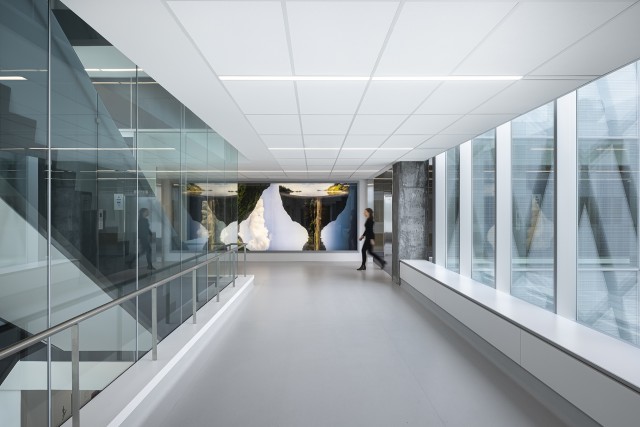
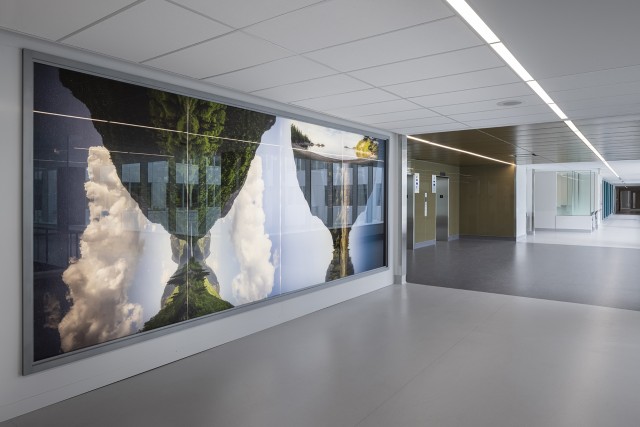
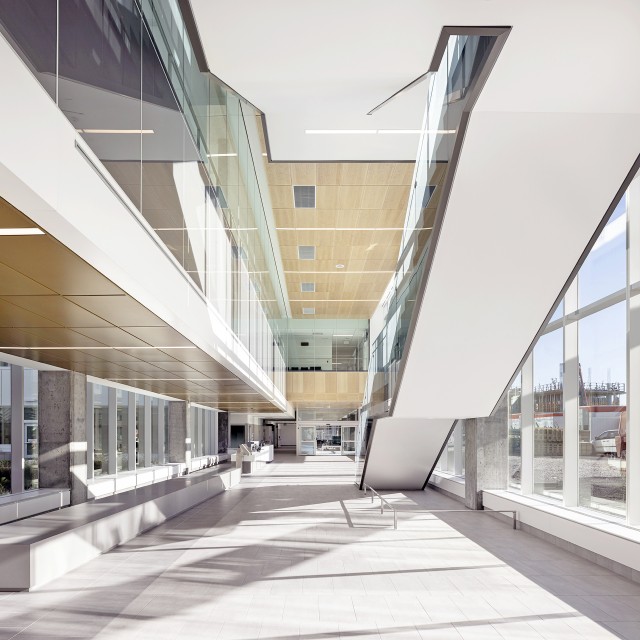
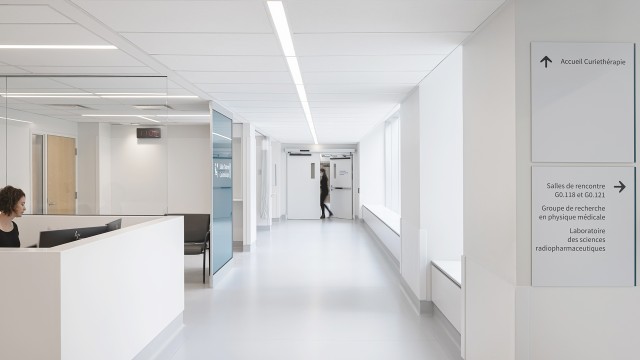

In its relation to the research centre and critical care wing, currently under construction, the CIC also includes a glassed-in hallway on its façade to ensure a supply of natural light to the courtyard. Based on the guiding idea of “gardens for all,” people benefit on one side from a view of the courtyard and on the other of a future garden that will be built in front of the CIC, on the Henri-Bourassa Blvd. side.

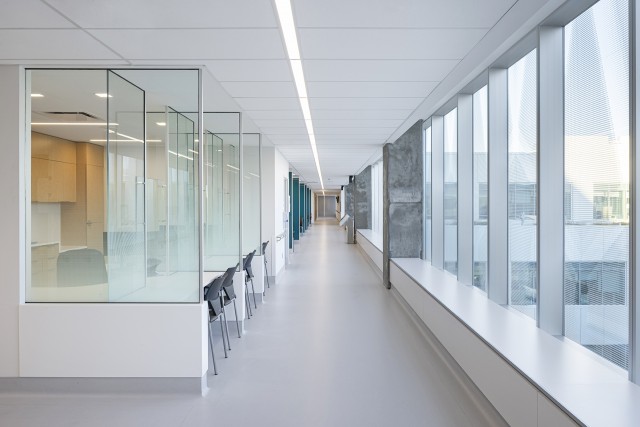
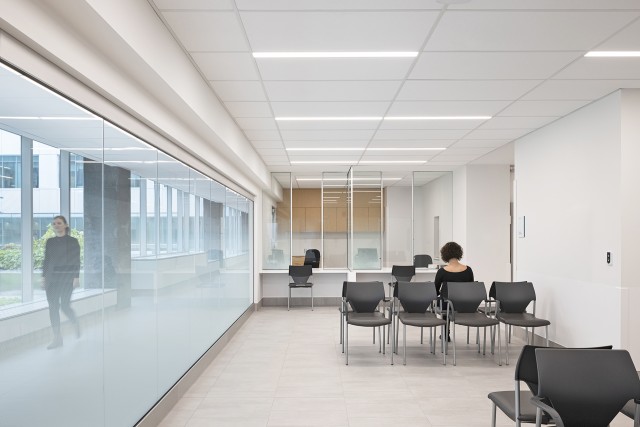
Project program
- 32,230 m² on six levels, including mechanical
- Treatment planning and simulation sector: two CT scanners, one positron emission tomography scanner (PET/CT) and one magnetic resonance imaging scanner (MRI)
- Radio-oncology sector: teletherapy – external radiotherapy in which radiation is emitted by a device and directed at the patient (14 shielded treatment rooms including eight rooms for linear accelerators, two rooms for linear accelerator-guided radiotherapy (MRI-LINAC), one radiosurgery room, one orthovoltage room, one shielding vault for rotations and one vault for a future use to be determined); brachytherapy – internal radiotherapy that entails placing a radioactive implant near the tumour in order to destroy it (rooms with CT scanners on rails and one operating room with a magnetic resonance imaging (MRI) scanner) and medical physics
- Chemotherapy ward: 63 chairs, 6-8 closed gurneys, 5 gurneys for apheresis treatments and 11 gurneys in the rapid-response unit
- Consultation sector: 8 specialized clinics organized by tumour site, 43 multi-purpose, double-doored examination rooms, 33 interview and consultation rooms and 19 specialized examination rooms
- Research and teaching facilities
- 1,526 m² of greenspace (courtyards, gardens, rooftop gardens)
- 3 series of artworks in eight locations
Project team
Architects for the new hospital complex: Groupe A, DMG, Lemay, Jodoin Lamarre Pratte architectes, NFOE, GLCRM
Consortium lead: Patrice Beauchemin, architect and partner (Groupe A / Annexe U)
New hospital complex project manager: Jacques Lavergne, architect (DMG)
Assistant project manager, new hospital complex: Anne-Marie Blais, architect and partner, PA LEED (Groupe A/Annexe U)
Chief designer, new hospital complex: Raynald St-Hilaire, architect (Lemay)
Architect in charge of volumetrics, building envelope, urban design and landscape architecture for the new hospital complex: Rémi Morency, partner, architect and urbanist (Groupe A / Annexe U)
Assistant project manager, integrated oncology centre: François Mathieu, architect and partner (GLCRM)
Co-leads, oncology centre design: Lucie Bégin, chief architect and Michel Broz, architect and senior partner (Jodoin Lamarre Pratte architectes)
Cyclotron design lead: Dominic Daoust, chief architect (NFOE)
Head of work supervision: François Paradis, architect and partner (GLCRM)
Engineering: SNC Lavalin, Tetratech, BPA, Cima+, Stantec
Construction: Pomerleau
Project manager: Société québécoise des infrastructures
Owner: CHU de Québec – Université Laval
Photos: Stéphane Groleau
Art
Patrick Beaulieu
Éclaircie
2019
Bronze, aluminum and light
8 x 8 x 11 m / 3.5 x 2 x 0.15 m / 1.3 x 2.2 x 2 m
Ivan Binet
Échos (Passages, Vases et montagnes et Écho du ciel)
2020
Inkjet prints on backlit tempered glass and aluminum frames
3 m x 7.3 m / 3 m x 5.8 m / 3 m x 5.8 m
Émilie Rondeau
La valse des fleurs
2019
Curved, expanded and cut aluminum, baked-on paint and tempered laminated glass
22 x 7.7 m and 18 x 4.3 m